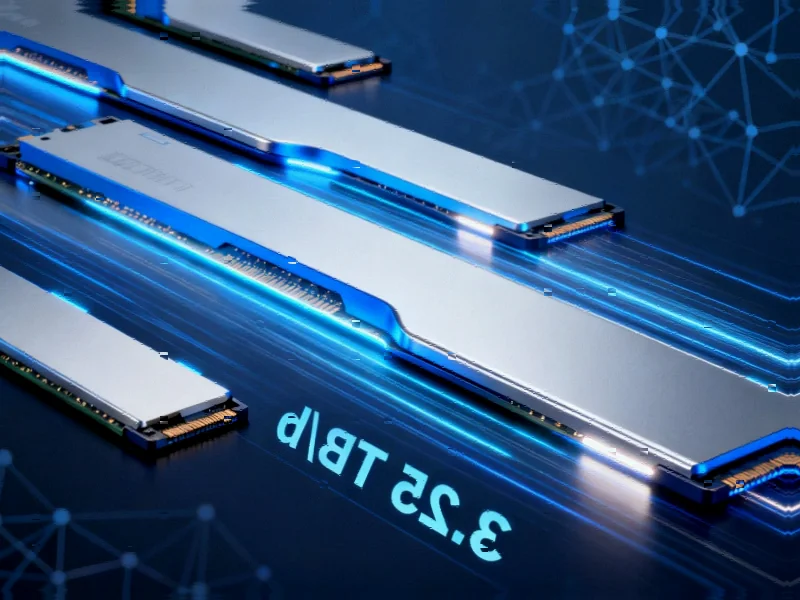The Vision: Disrupting Wireless Infrastructure Through Open Standards
When former Qualcomm executive Vinay Ravuri established EdgeQ in 2018, he identified a critical gap in the global wireless chip market. The industry was dominated by a select few players, creating an innovation bottleneck in wireless infrastructure. “The complexity of wireless signal processing—combining information theory, algorithms, and chip design—had traditionally been locked within proprietary systems,” Ravuri observed. This realization sparked his mission to democratize wireless technology through open standards, mirroring the transformative impact Linux had on software development.
Table of Contents
- The Vision: Disrupting Wireless Infrastructure Through Open Standards
- Building Global Talent: India’s Engineering Powerhouse
- Technical Breakthrough: Unified 5G and AI Architecture
- Hardware Architecture: Designed for Flexibility and Efficiency
- From Design to Deployment: Manufacturing and Verification Excellence
- Market Strategy: Targeting High-Growth Wireless Segments
- Funding and Industry Recognition
- Future Roadmap: Toward 6G and Advanced AI Integration
Building Global Talent: India’s Engineering Powerhouse
EdgeQ’s founding philosophy prioritized talent over geography. “Our approach was straightforward: hire exceptional engineers regardless of location,” Ravuri explained. This strategy naturally led to establishing significant engineering centers across India, particularly in Bengaluru, where many team members brought experience from industry giants like Qualcomm and Intel. The COVID-19 pandemic further validated this distributed model, enabling the company to recruit top talent across India, the United States, and Europe.
Hariprasad Gangadharan, Vice President and Head of Silicon Engineering, emphasized the conscious decision by many Indian engineers to drive deep technology development from their home country. “At a time when entrepreneurship wasn’t commonplace, we chose to build advanced semiconductor technology from India,” he noted. Gangadharan’s own background includes successful stints at wireless chip startups that were acquired by Cypress and Broadcom, bringing valuable experience to EdgeQ’s ambitious mission.
Technical Breakthrough: Unified 5G and AI Architecture
EdgeQ’s core innovation represents a fundamental shift in semiconductor design for telecommunications. The company is developing what it claims to be India’s first complete 5G System-on-Chip (SoC) that integrates both 5G baseband processing and artificial intelligence acceleration on a single silicon die. “We’re among the very few startups globally building a full 5G SoC from the ground up, and the only one originating from India,” Gangadharan stated.
The technological breakthrough lies in EdgeQ’s architecture that unifies traditionally separate functions. Instead of requiring discrete chips for 4G, 5G, and AI workloads—each with dedicated memory, power management, and peripherals—EdgeQ employs configurable multipliers that dynamically adapt to either 5G baseband computations or AI matrix multiplications. “The same hardware that performs channel estimation and equalization for 5G can simultaneously handle neural-network computations,” Gangadharan explained., according to recent studies
Ravuri simplified the technical concept: “Our architecture leverages the mathematical commonality between 5G and AI. The matrix mathematics used in 5G, based on complex numbers, can be transformed for AI applications by modifying matrix elements. By zeroing out imaginary components, we convert operations to dot-products, which form the foundation of most AI computations.”
Hardware Architecture: Designed for Flexibility and Efficiency
The SoC incorporates multiple specialized components engineered for maximum flexibility:
- Tensor Execution Units (TXU): Handle all mathematical operations across both 5G and AI workloads
- Forward Error Correction blocks: Ensure reliable data transmission following 3GPP standards
- Security and crypto accelerators: Provide hardware-level protection for sensitive communications
- Custom instruction sets: Optimize packet processing and real-time scheduling
- Hybrid processing cores: Combine ARM CPUs with RISC-V cores for software programmability
This integrated approach delivers substantial advantages in both power efficiency and cost reduction. “Traditional solutions require at least three separate chips for 4G, 5G, and MAC layer processing. Our single-chip architecture eliminates this redundancy, dramatically reducing power consumption and bill of materials,” Gangadharan revealed. The company has applied mobile SoC design principles to base station chips, achieving approximately one-third the power consumption of comparable solutions.
From Design to Deployment: Manufacturing and Verification Excellence
EdgeQ engineered its SoC with manufacturability and scalability as primary considerations. The verification process presented significant challenges, but the team delivered silicon requiring zero metal-mask fixes post-tape-out—a notable achievement in complex semiconductor design. “We accomplished this through extensive modeling, emulation, and hardware-software co-verification,” Gangadharan explained. “We developed system-level models in SystemC, stress-tested them with real traffic patterns, and used FPGA-based emulation to validate throughput and latency.”
The deployment process begins with evaluation kits—compact boards resembling laptop sizes that contain the chip and base software. “Customers typically conduct three to six months of laboratory testing, sometimes connecting hundreds of phones to measure power and performance characteristics,” Ravuri described. Subsequent system development by customers takes approximately twelve months, with EdgeQ providing ongoing support and firmware updates throughout the chip’s five-to-seven-year typical lifecycle.
Market Strategy: Targeting High-Growth Wireless Segments
EdgeQ strategically focuses on high-volume segments within wireless infrastructure, including indoor and outdoor small cells, open RAN deployments, and satellite communications. “Indoor private 5G networks are projected to grow faster than traditional cell towers,” Ravuri observed. “While there are approximately one million towers worldwide, the potential indoor deployment locations far exceed this number, similar to the proliferation pattern we witnessed with Wi-Fi access points.”
The company’s business model centers on chip sales bundled with base software, supplemented by licensing fees for advanced features like AI functionality or simultaneous 4G+5G operation. “AI represents an add-on capability—customers desiring AI features pay additional licensing fees,” Ravuri clarified. Maintenance contracts cover ongoing updates and bug fixes throughout the chip’s operational lifespan.
Funding and Industry Recognition
EdgeQ has secured substantial backing from global investors, including Threshold Ventures—known for early investments in Tesla and SpaceX. The startup has raised $126 million across three funding rounds, with a $75 million Series B round completed in April 2023 representing its largest financing to date. The company’s advisory board includes former Qualcomm executives Paul Jacobs and Matt Grob, providing industry expertise and strategic guidance.
EdgeQ employs a Customer-Owned Tooling (COT) model while concentrating on chip design and architecture. The company collaborates with industry leaders including Synopsys and Cadence for design tools, TSMC for semiconductor manufacturing, and various OSAT partners for packaging and testing. Their technology has earned recognition within the industry, including being featured on EE Times’ list of 100 promising silicon startups for three consecutive years., as related article
Future Roadmap: Toward 6G and Advanced AI Integration
Despite facing typical challenges of disrupting an established market, EdgeQ continues to advance its technology roadmap. “The 5G market evolution has been slower than initial projections, with primary focus remaining on smartphone applications rather than industrial automation,” Ravuri acknowledged. However, he noted growing momentum in private 5G networks and industrial automation, complemented by geopolitical factors driving local manufacturing initiatives—particularly in India.
Looking forward, EdgeQ plans to extend its unified platform toward 6G standards, enhance AI integration capabilities, and develop scalable multi-chip configurations. “Technically, our current architecture could support 6G software implementations, but performance improvements will naturally drive hardware upgrades—similar to how consumers replace functional phones with newer models offering enhanced capabilities,” Ravuri explained.
Gangadharan emphasized India’s expanding role as the company’s hub for design, verification, and software development, with plans to scale production and advance AI capabilities on future chip iterations. EdgeQ represents a significant milestone in India’s semiconductor ambitions, combining world-class engineering talent with visionary leadership to establish the country as a serious contender in advanced wireless and AI semiconductor design.
As Ravuri reflected on the company’s journey: “Historically, disruptive technologies typically require about a decade to reach inflection points. We believe we’re approaching that pivotal moment where our technology will catalyze meaningful transformation in wireless infrastructure.”
Related Articles You May Find Interesting
- Xbox’s Premium Pivot: Inside Microsoft’s High-End Hardware Strategy Shift
- Mercedes-Benz Secures Chip Supply Buffer Amid Nexperia Export Dispute
- India’s Semiconductor Ambition Takes Flight with EdgeQ’s Unified 5G and AI Chip
- Walmart’s H-1B Hiring Pause Signals Broader Shift in U.S. Immigration Policy Lan
- London FinTech Saturn Secures €12.9M to Revolutionize Wealth Management Through
This article aggregates information from publicly available sources. All trademarks and copyrights belong to their respective owners.
Note: Featured image is for illustrative purposes only and does not represent any specific product, service, or entity mentioned in this article.



